18-Year-Old Girl Fatally Shot by Iran's Police During Arbitrary Raid
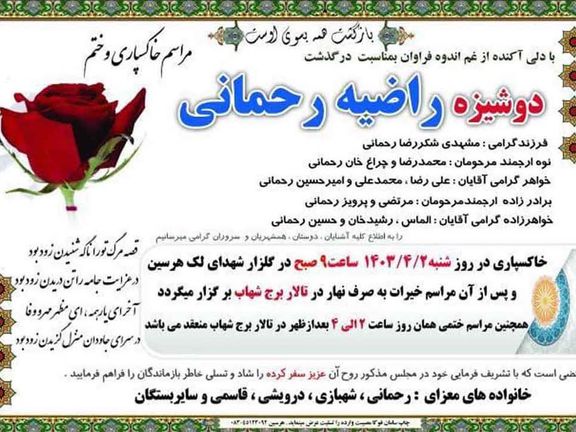
An 18-year-old Iranian girl was fatally shot by Iran’s police forces on Thursday during a raid on her family home in a village in Lorestan province, western Iran.

An 18-year-old Iranian girl was fatally shot by Iran’s police forces on Thursday during a raid on her family home in a village in Lorestan province, western Iran.
Police forces entered her family home without presenting a court order, according to rights group Kurdistan Human Rights Network (KHRN).
"On Thursday, June 20, police forces from the Cheshmeh Sefid police station in the town of Noorabad, Lorestan Province, raided the home of Shokr Reza Rahmani in the village of Goijeh under the pretext of conducting a search for illicit drugs," KHRN write.
"During the raid, the family’s 18-year-old daughter, Razieh Rahmani, was fatally shot in the head," it added.
A source close to the family told KHRN that a verbal altercation ensued between a family member and a police officer, during which the officer fired a shot, striking Razieh in the head and resulting in her death.
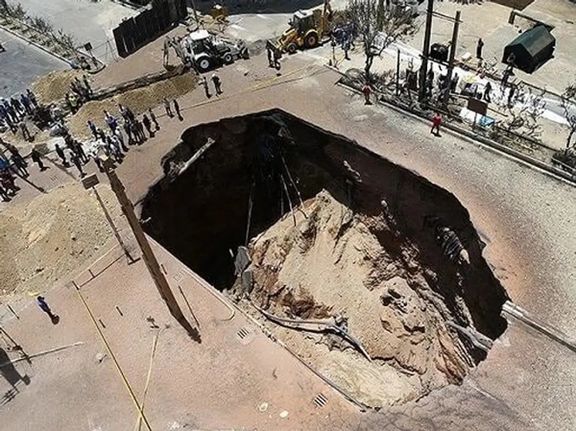
Iran has consumed its thousand-year water reserve in just three decades as the country's environmental crisis worsens.
"We used up most of the 250 billion cubic meters of water that we have and are projected to have in our aquifers over the last three decades,” prominent Iranian environmental activist, Mohammad Darvish, revealed Saturday.
In the article in Shargh News, he characterized the amount of water consumed in Iran during this period as equivalent to depleting a "thousand-year reserve," emphasizing that this depletion poses a critical risk to biosecurity.
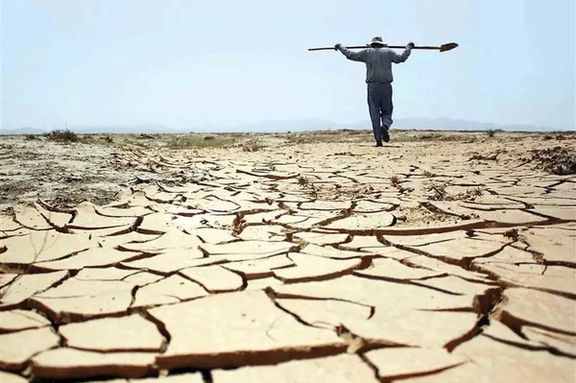
Darvish attributed the rapid depletion primarily to the excessive extraction of underground water.
Describing the situation as "very, very dangerous" and Iran as plagued by severe "water shortages," he noted that Iran has the highest global rate of land subsidence.
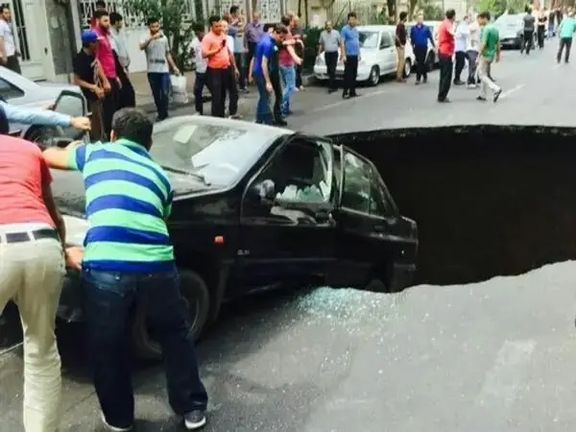
Land subsidence, a sinking or collapse of the ground can be triggered by human-induced underground voids including water abstraction from from certain types of rocks, such as fine-grained sediments, according to the U.S. Geological Survey.
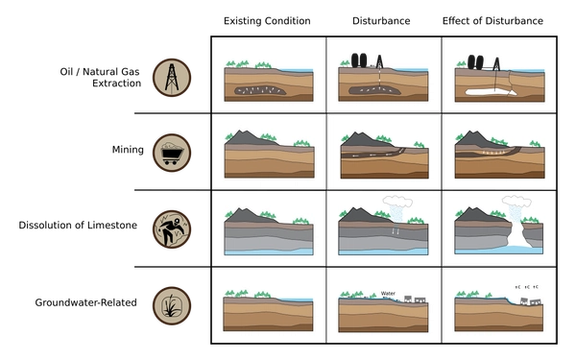
In Iran’s case, as highlighted by Darvish, the alarming rate of subsidence is predominantly attributed to human-induced excessive water abstraction and Iran’s extensive well-drilling practice. Additionally, climate change, inefficient agricultural and industrial water use, and illegal wells tapping underground aquifers have all contributed to the crisis.
A mere 3 percent of agricultural users in provinces like Isfahan and Khorasan-Razavi consume as much water as 30 percent of the entire country according to Darvish. These users have significant influence and resist efforts to reduce their water use, exacerbating the crisis.
Meanwhile, they are the two main centers of land subsidence in Iran whilst being home to the highest population densities in the country. Indiscriminate withdrawals of water resources for agricultural, industrial, tourism, and construction purposes are among the causes of subsidence in these areas.
Darvish also said that Tehran's sewerage network "aggravates the issue of subsidence." Tehran has nearly 150 meters of underground water level drop, and this is while its sewage network is not yet completed. He warned that if completed “not a single drop of water will have a chance to sink.”
Darvish further added that despite facing severe water shortages and maintaining the highest rate of land subsidence, Iran continues to build wealth from "virtual water exports, agricultural and dairy products” underscoring the unsustainable exploitation of its natural resources.
Iran’s soil erosion rate is eight times the global average, costing the country $56 billion annually in lost land value, according to Darvish. Despite this, he said reports about the subsidence crisis in the country are classified as "confidential" by authorities.
A German-led study involving Iranian researchers revealed that at least 57,000 square kilometers of Iranian soil subsides more than one centimeter per year. The Geological Organization of Iran reports even more alarming figures: some areas are subsiding by more than two centimeters annually over 50,000 square kilometers, far exceeding critical thresholds.
Darvish emphasizes that ground subsidence exceeding four millimeters is a critical limit, beyond which, the situation becomes increasingly challenging.
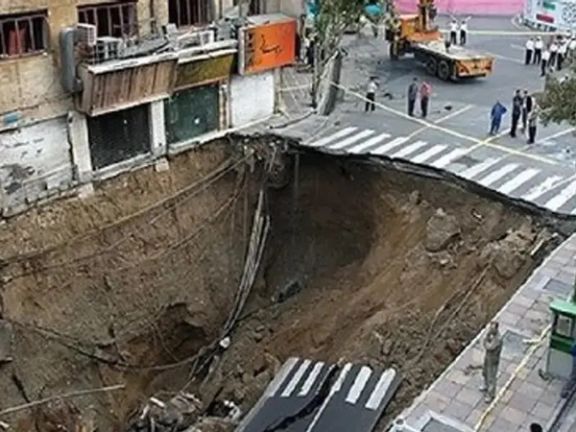
Earlier in June, an official from Iran’s Ministry of Roads and Urban Development disclosed alarming subsidence rates. In Kerman province, the ground sinks 40 centimeters annually, while in southern Alborz province near Tehran, it exceeds 30 centimeters per year. These rates pose significant threats to infrastructure and urban development, risking the lives of millions of Iranians.
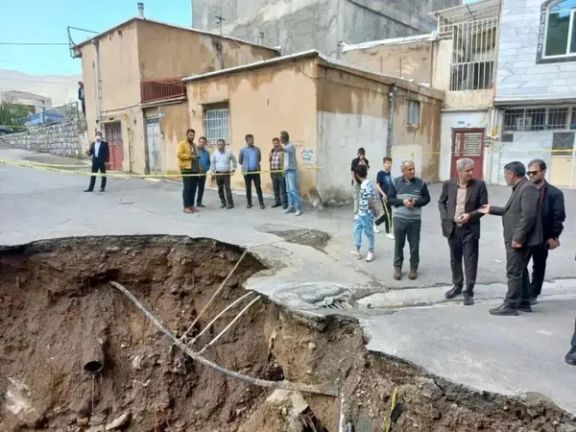
Earlier this month, it was reported that in Khorasan Razavi province in the city of Mashhad, the subsidence rate in the northwest of the city reached 20 centimeters per year, bringing it on par with the fastest sinking cities in the world.
It followed an announcement in March by an Iranian parliamentarian who warned of imminent displacement in Esfahan due to severe land subsidence, emphasizing the urgent need for action.
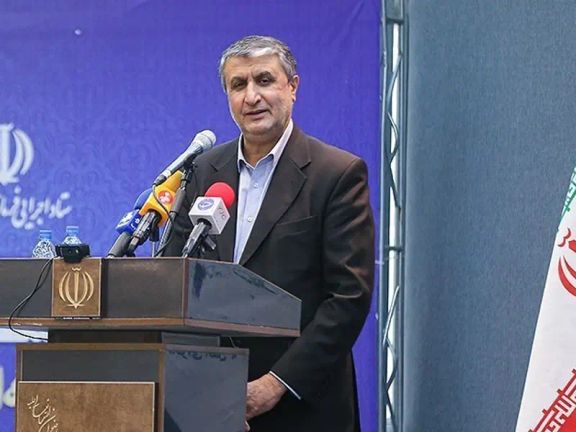
Iran’s top nuclear official says the country's interactions with the UN nuclear watchdog, IAEA, are limited to the legal boundaries of the Nuclear Non-Proliferation Treaty (NPT) and the Safeguards.
Mohammad Eslami emphasized that the International Atomic Energy Agency (IAEA) has no right to demand anything beyond these limits.
The statement arises amid increased scrutiny over Iran's nuclear activities, with international concern about potential NPT violations.
In his Sunday remarks, Eslami argued that the IAEA's role should be confined to "legal obligations" that the agency should maintain without exceeding its mandate.
"The agency is responsible for oversight, encouragement, and fair distribution of nuclear technology. This is a legal obligation, and it must be pursued and demanded within this framework. Beyond this, there is nothing else that the agency should bring up," Eslami said.
Critics see the interpretation by Iran as an attempt to avoid comprehensive inspections and conceal the extent of its nuclear activities. The IAEA has repeatedly expressed concerns about Iran's cooperation with its investigations and the transparency of its nuclear program.
Earlier this month, Board members of the IAEA passed a resolution criticizing Iran's lack of cooperation with IAEA nuclear inspections.
A recent report from the nuclear watchdog indicates that Iran's stockpile of enriched uranium now exceeds 30 times the limit established by the 2015 nuclear deal between Tehran and world powers (JCPOA). The uranium is enriched to 60 percent, which is near the 90 percent enrichment level required for nuclear weapons.
The Joint Comprehensive Plan of Action (JCPOA), established in 2015 between Iran and the P5+1 countries (the US, UK, France, Russia, China, and Germany), aimed to curb Iran’s nuclear capabilities in exchange for lifting economic sanctions. However, the accord has been under strain since the US withdrawal in 2018, prompting Iran to progressively breach several of its commitments, such as exceeding the uranium enrichment levels and stockpile limits set by the agreement.
Iran's advancements include resuming enrichment at the Fordow Fuel Enrichment Plant and enhancing enrichment purity up to 60%. These actions reduce the breakout time needed to produce enough fissile material for a nuclear weapon, raising concerns about the dual-use nature of Iran's nuclear program.
The IAEA has struggled with monitoring challenges due to restrictions imposed by Iran, which complicate efforts to verify the extent of Iran’s enrichment activities. The agency's reports suggest that Iran has accumulated enough enriched uranium that could be quickly elevated to weapons-grade levels, amplifying worries about Iran’s intentions.
Iran maintains that its nuclear program is solely for peaceful purposes, but its near-weapons-grade enrichment activities continue to provoke international unease.
In its June report, the IAEA said Iran aims to continue expanding its nuclear program in ways that "have no credible peaceful purpose."
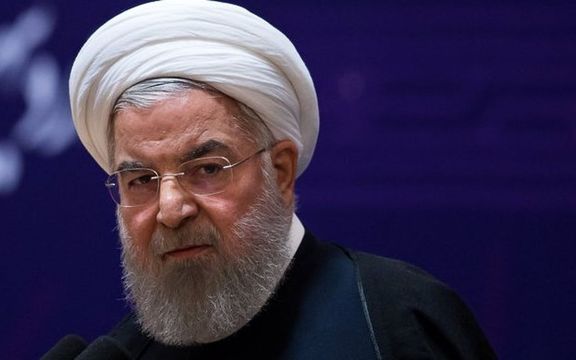
Former Iranian President Hassan Rouhani says Iran incurred an annual loss of some $100 billion over the past three years due to sanctions that forced the country to sell oil and petrochemicals at discounted rates.
Rouhani accused former president Ebrahim Raisi's government of "betraying" the Iranian people by causing $300 billion in damages over the course of three years.
Rouhani's claims come amid a presidential election campaign during which his administration has been harshly criticized by hardliners. His remarks seem to be somewhat exaggerated in terms of the amount of revenue losses. In fact, the Raisi administration has sold much more oil than in 2019-2021, the last three years of Rouhani's presidency, after the United States imposed sanctions.
After former US president Donald Trump withdrew from the JCPOA nuclear accord and imposed third-party oil export sanctions on Iran, shipments declined from two million barrels a day to around 250,000. With the election of Joe Biden, China began increasing its oil imports from Iran, which have reached 1.3 million barrels per day.
In addition, even if Iran exported two million barrels, the revenue would still be far below $100 billion, at less than $60 billion at current average prices.
Rouhani's rebuke also targeted the December 2020 Strategic Action Law to Lift Sanctions and Safeguard Iran's National Interests, enacted under the leadership of conservative parliament speaker Mohammad Bagher Ghalibaf. The bill, intended to pressure the newly elected Biden administration, authorized uranium enrichment at 20%—far higher than the JCPOA limits—and reduced international nuclear inspections by the UN watchdog, the IAEA.
He condemned the legislation as "the worst in the history of the Islamic Republic of Iran," dismissing it as a "conspiracy" to undermine his administration.
"We have never had a worse law. It was clearly designed to ensure that the people cannot breathe. I know exactly who was behind its design and implementation," Rouhani said in a Wednesday speech whose text was published Sunday.
As the Biden administration entered into indirect talks with Iran in April 2021 ro revive the JCPOA, Tehran continued to escalate its nuclear violations and eventually the negotiations failed in 2022. Although the Biden administration has relaxed the enforcement of the oil sanctions, Iran's economy is still under pressure with annual inflation hovering around 50%.
His remarks were in direct response to criticisms from ultra-conservative candidates in the upcoming June 28 elections, who, during televised debates, have lambasted Rouhani’s administration for its “inefficiency” and criticized the 2015 nuclear agreement negotiated under his leadership.
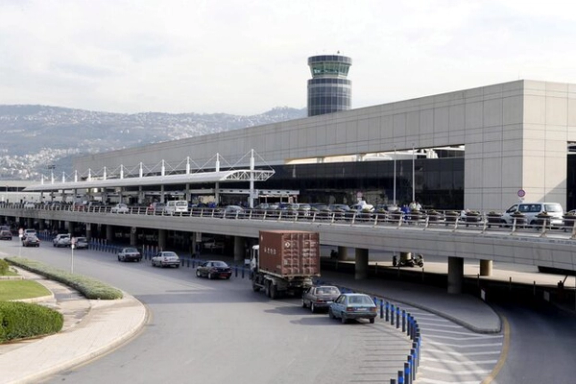
Lebanon's Hezbollah is amassing a large cache of Iranian weapons at Beirut’s main civilian airport, Rafic Hariri International Airport, whistleblowers say.
The weapons stored include Falaq unguided artillery rockets, Fateh-110 and M-600 short-range missiles, and other advanced munitions, according to whistleblowers quoted by The Telegraph on Sunday.
There are also reports of the presence of AT-14 Kornet anti-tank guided missiles, Burkan short-range ballistic missiles, and RDX explosives.
The situation at the airport, located just four miles from Beirut's city center, has escalated concerns that it could become a military target for Israel amid rising tensions between the two sides.
One airport worker revealed the arrival of "mysterious large boxes from Iran," marking a concerning uptick in arms storage that coincides with heightened regional tensions. The worker expressed fears reminiscent of the devastating Beirut port explosion in 2020, suggesting that a similar incident could occur at the airport due to such activities.
Insiders report that Hezbollah's influence over airport operations has visibly increased, with the group's key figures, like its second-in-command Wafiq Safa, being regularly spotted managing affairs directly, intensifying the threat of retaliation by Israeli forces.
Later on Sunday, Lebanon’s Hezbollah-affiliated Transport Minister Ali Hamieh held a press conference at the Beirut–Rafic Hariri International Airport to dismiss what he called "ridiculous" allegations by whistleblowers that the airport is used by Hezbollah to store Iranian weapons.
He invited journalists and ambassadors to take a tour of the airport's facilities on Monday morning to prove "there's nothing to hide".
He also said that his office is in the process of filing a lawsuit against Telegraph.
Hezbollah, Iran's most formidable proxy, funded, trained, and armed by Tehran, continues its daily skirmishes with Israeli forces amid the ongoing Gaza conflict. The northern border conflict marks the most severe since the Second Lebanon War.
Since the October 7 invasion, Hezbollah, along with Iran's proxies in Syria, Yemen, Iraq, and Gaza, has supported Hamas by launching missiles towards all of Israel's borders.

Iran's Oil Minister Javad Owji has refuted claims by some presidential candidates that the government is offering high discounts to foreign oil customers amid US sanctions.
Owji said on Sunday that the administration of late president Ebrahim Raisi did not offer "high discounts" to its buyers, tacitly referring to Chinese refineries that are the main importers of Iran’s crude.
He said that over the past three years, significantly fewer discounts have been given compared to the previous government.
Tehran keeps its export and revenue details as state secret but Owji’s remarks come despite reports that Tehran provides huge discounts to China, charging as little as $37 per barrel while oil has been trading at around 75-85 dollars in the past year. According to a report by Reuters Iran offers at least $13/barrel discount to Chinese refineries.
In May 2023, an analyst quoted an unnamed EU energy security source as saying that China, which already had secured a 30-percent discount from Iran before the Russian invasion of Ukraine, demanded and received higher price cuts. Beijing already buys Russian oil at a large discount.
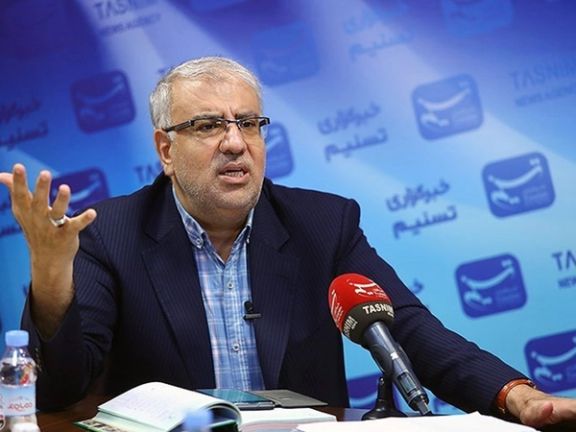
“But it is even worse for Iran, as – from 11 November 2022 - China has been paying Iran in non-convertible Yuan, that is Yuan that can only be used inside China and/or spent buying Chinese goods,” the EU source added. “Worse still is that whilst Yuan is the key instrument in payment, China is also using the currencies of Angola, Zambia and Kenya to pay Iran, and China is doing this as a means to induce Iran to buys goods from these countries so that these countries, in turn, can service their loans to China,” he argued.
Last June, The Wall Street Journal reported that Iran was exporting the highest amount of crude oil in five years, although it offers discounts of up to $30 per barrel. The report confirmed estimates that Iran shipped 1.6 million barrels per day in May and June, up from 250,000 barrels in 2019 and 2020, just after the United States imposed full sanctions.
Data from oil tanker tracking companies like Vortexa and TankerTrackers shows that Iran exported roughly 1.3 million barrels per day (bpd) of crude oil and condensate in 2023, along with over 220,000 bpd of fuel oil (mazut).
OPEC estimated the price of Iranian oil exports in 2023, excluding discounts and sanctions-busting costs, to be above $83 per barrel. Based on this, Iran's revenue from crude oil, condensate, and fuel oil exports should have been at least $46 billion. However, Iranian customs data reveals the actual figure was only $36 billion.
This $10 billion discrepancy suggests that around 22% of Iran's oil revenue was lost due to high discounts and sanctions-related costs.
Another way to look at the issue is that Iran needs around $50 billion from oil exports to balance its budget, but at least half of that amount is not realized. This means it receives around $25 billion in hard currency.
Another reason for Iran’s oil revenues being probably around $25 billion is the costs involved in illicit shipments to evade sanctions, and losing money in trying to repatriate the funds in hard currencies. Iran’s banking system is under US sanction and any oil revenues are laundered through intermediaries.
This issue resonated during the recent Iranian presidential election. Candidates Masoud Pezeshkan and Mohammad Bagher Ghalibaf both directly and indirectly criticized the impact of sanctions, high discounts, and wasted revenue from oil exports.
Despite the evidence, the oil minister continues to insist on his claim of not offering high discounts. He stated that Iran currently has 15 oil buyers, but only named China and Syria, leaving the identities of the remaining "customers" undisclosed.
Adding to the confusion, Oji claimed Iran's daily crude oil production has reached 3.6 million bpd. This contradicts figures from OPEC and the International Energy Agency, which estimate the actual production to be below 3.3 million bpd.